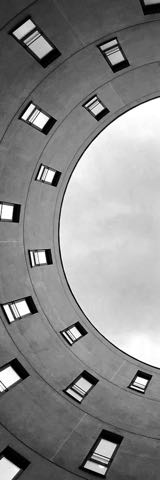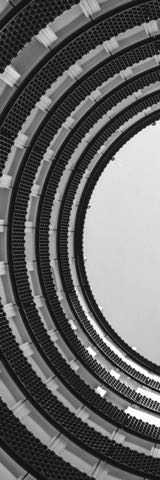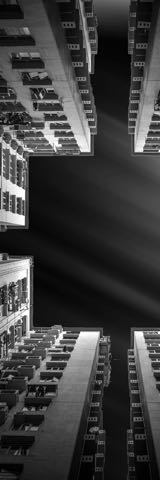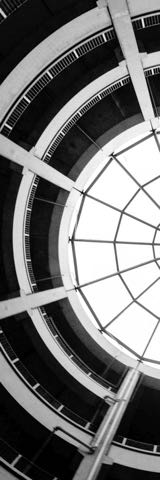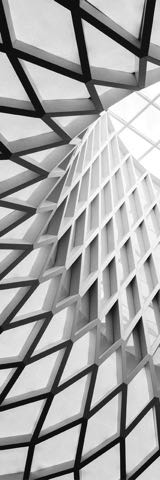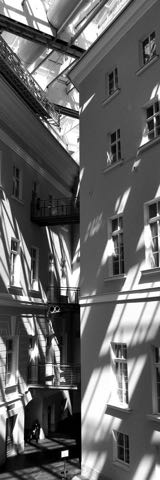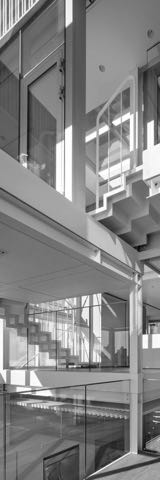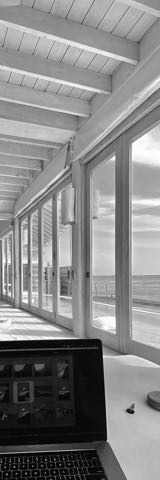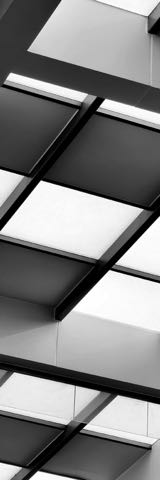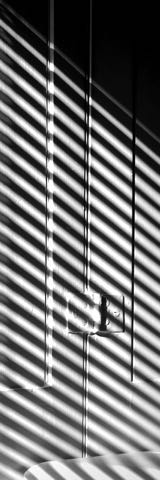Why consider daylight?
Natural light - or daylight - improves the quality of any building.
Save on energy costs
Improve indoor environment
Increase property value
Save on energy costs - all day, every day.
Use it all day, every day
Daylight is available over 4400 hours in a year, all day, every day - even in rainy, cloudy weather.
Get it free of charge
The renewable source of all daylight is the Sun, providing over 8,8 10 7 lm/m2 annual illuminance free of charge.
See the natural colors
Daylight provides the highest level of color-rendering (CRI > 95%) that no electric light source can fully match.
Save on lighting costs
A good daylighting design can save up to 75% of the energy used for electric lighting in a building.
Daylight provision
Daylight can contribute significantly to the lighting needs of any type of building.
The daylight provision levels (minimum, medium or high) of the interior spaces of an existing or completed building can be determined with on-site measurements.
This is invaluable information for inhabitants and owners to plan interior renovation or refurbishment; to optimize electric light usage and to provide better indoor environment for the occupants.
The daylight performance of the interiors effects the value of the entire building. Real-estate professionals can use this benchmark to compare properties and deliver more accurate return on investment forecasts.
| EU Standard | ET (ETM) lx | F plane (min) % |
|---|---|---|
| Minimum | 300 (100) lx | 50 (95)% |
| Medium | 500 (300) lx | 50 (95)% |
| High | 750 (500) lx | 50 (95)% |
Levels of daylight provision by openings in vertical and inclined surfaces (EN 17037 EU Standard).
Let the sunshine in - and stay healthy.
Keep your internal clock in sync
The availability of direct sunshine is crucial for the brain to maintain the circadian rhythm - adjust the melatonin levels - and keep the daily schedule for sleep and wakefulness.
Get the sunshine vitamin
Vitamin D supports bone health, blood pressure regulation and immune system strength - but only if your body is exposed to direct sunshine.
Enjoy the sun and stay healthy
Sunshine helps to lower stress, fight off depression, treat skin conditions, have a good sleep at night and helps to live a healthier, longer life.
Let in the sun when it's cold
Use passive and active solar heating systems to maximize the amount of solar gain and reduce heating costs in the cold season.
Exposure to sunlight
Direct sunlight is a quality criterion contributing to human well-being.
The duration of direct sunlight throughout the year in an existing building interior can be determined with on-site measurements, using photographs and sun-path diagrams. Based on this information the level of exposure to sunshine for a room (minimum, medium or high) can be determined; and used as input data for renovation planning and real-estate value estimation purposes.
| EU Standard | Sunlight exposure |
|---|---|
| Minimum | 1,5 h |
| Medium | 3,0 h |
| High | 4,0 h |
Levels for daily sunlight exposure (EN 17037 EU Standard).
Create pleasant workspaces - at home or in the office.
Stay focused - stay sharp
To maintain focus on the work - bright sunlight or its reflection glare on a monitor, desk, board or projector screen must be avoided.
Setup your workspace smartly
Selecting the right location and workspace position, adjusting the viewing direction may help to reduce the unpleasant distractions caused by glare.
Shed some light
Proper use of shading devices can help to reduce the risk of glare in open offices or co-working spaces where occupants are unable to choose their work position or viewing direction.
Work in harmony
Create pleasant and productive work environment with the harmony of lighting, shading, interior décor and workplace ergonomics.
Protection from glare
Glare is a negative sensation causing annoyance, discomfort or loss of visibility.
Sunlight - particularly in classrooms and workspaces - can cause serious visual discomfort. Once the sources of glare and its duration is identified, the probability of glare can be minimized.
Modifying the layout and arrangement of workspaces, applying external and internal shading devices and daylight aperture glazing systems can reduce glare and ensure more comfortable work environment for existing buildings as well.
| EU Standard | DGP e < 5% |
|---|---|
| Minimum | 0,45 |
| Medium | 0,40 |
| High | 0,35 |
Levels of threshold for glare protection (EN 17037 EU Standard).
Enjoy the view - stay in picture.
Be in the picture
View of the outside - visual connection with the exterior - provide information about the local environment, weather changes and the time of the day.
Relax with the view
The outside view provides refreshment and relaxation afforded by a change of the visual field and focus and helps to relieve the fatigue associated with long periods of indoors stay.
Home with a view
The quality (diversity, number of visible layers) and the characteristics (distance, view angle) of the view out significantly affects property values.
Look out - feel safe
The view of the outside world has its own, unique qualities; lends a feeling of security for the occupants that can't be substituted with CCTV security systems.
View out
Windows provide much more than daylight that can't be substituted or ignored.
The quality of the view available from an interior of a flat greatly effects the value of a property. Flats and apartments within the same building may have equal floor area and layout, yet the quality of the offered view may differ greatly.
A wide and distant view is appreciated more than a narrow and near view. A diverse and dynamic view is more interesting than a monotonous view. A view of nature may have positive influence on a person’s sense of wellbeing, and job satisfaction, and people generally prefer to sit near a daylight opening and to look outside.
| EU Standard | Horizontal sight angle | Outside distance | Number of layers |
|---|---|---|---|
| Minimum | ≥ 14° | ≥ 6,00 m | Landscape |
| Medium | ≥ 28° | ≥ 20,00 m | Landscp+1 |
| High | ≥ 54° | ≥ 50,00 m | All 3 layers |
Levels of view out from a given position (EN 17037 EU Standard).
References
Case studies, articles, daylighting design and measurement.
Daylight provision evaluation, exposure to sunlight duration, glare risk assessment, view out validation.
Frequently asked questions
Daylight, sunlight, glare, view out and the EN 17037 EU standard.
-
What is daylighting?
Open or CloseDaylighting is the controlled admission of natural light (direct sunlight, diffuse skylight) into building interiors through windows, transparent walls, ceilings and skylight openings.
-
What are the benefits of daylight?
Open or CloseThe use of daylight - natural light - saves on electric energy costs, contributes to indoor well-being and health, increases property values and result better return on investment.
-
Who should consider daylighting?
Open or CloseArchitects can design better quality buildings, utilize more solar energy; owners can improve the quality of interiors; real-estate professionals can achieve better return on investment.
-
Why the EN 17037 EU daylight standard is important?
Open or CloseThe new European standard considers both quantity and quality aspects of daylight. Provides exact benchmark levels, design and validation methods and metrics for 33 European countries.
-
What is the scope of the Daylight of Buildings standard?
Open or CloseThe Eropean standard considers four specific fields for daylight assessment in the indoor spaces: daylight provision, exposure to sunlight, glare protection and view out.
-
What is daylight provision?
Open or CloseThis describes the amount and distribution of daylight in the interior, achieving higher levels means that less electric light will be used in the building.
-
What is exposure to sunlight?
Open or CloseThis describes the duration of direct sunlight in the interior, contributes to the well-being and health of occupants, mandatory in kinder gardens, homes and hospitals.
-
What is protection from glare?
Open or CloseThis is necessary to ensure pleasant and comfortable workspaces in schools, offices or at home; when reading, writing or using display devices.
-
What is view out?
Open or CloseThis describes the quality of the view provided through the windows of a room, achieving higher levels influence the market price of the property.
Contact
Daylighting design and evaluation services - based on the European standard.
Architects
Design better quality buildings, utilize more renewable energy, comply with regulations.
Owners
Improve the quality of existing indoor spaces for living and working and save on energy costs.
Developers
Calculate and compare property values, estimate the expected return on investment.












































